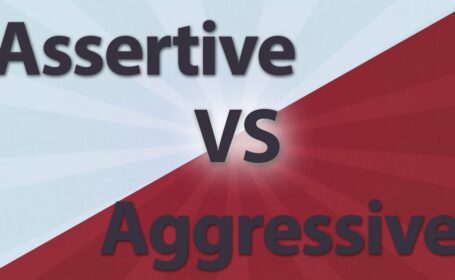

Why Employers in 2024 Should Embrace Vocational Education: A Quinn Vietnam Manpower Perspective
- trienkhaiweb
- 1 April, 2024
- 0 Comments
In today’s rapidly evolving labor market, a persistent paradox remains: millions of jobs remain unfilled while unemployment, especially among young people, continues to pose a challenge. Sadly, many unemployed individuals possess academic degrees. This contradiction clearly highlights the global skills shortage crisis. To address this, governments, educators, and employers like Quinn Vietnam Manpower are increasingly recognizing the immense value and potential of vocational education.
Reframing Vocational Education: A Competitive Advantage
Outdated attitudes towards vocational education have created a skills gap across economies worldwide. It’s crucial to move past the misconception that vocational graduates have inferior qualifications or social standing compared to university graduates. Additionally, students and families sometimes avoid vocational paths due to concerns about limited career advancement or outdated social biases. In today’s technology-driven world, these mindsets must shift.
While academic education remains valuable, it isn’t the sole path to success. Mass university participation doesn’t always translate into a highly qualified workforce. Traditional education models often involve 4-5 years of largely theoretical study. In contrast, vocational schools typically offer 2-year programs that equip students with both foundational knowledge and essential practical skills, making them job-ready. This focused, skills-based approach ensures graduates can enter the workforce with minimal additional training, saving companies precious time and resources.
It’s important to understand that vocational education extends well beyond technical training. It directly cultivates expertise in technology, skills, and techniques across all facets of a trade. The term broadly encompasses vocational education and training (VET), which includes both initial school-based programs for students and continuing education for adults in the workforce.

The Urgent Need for Skilled Manpower
Employers worldwide constantly grapple with significant recruitment and training expenses, lost productivity, and untapped potential. VET offers a compelling solution to these business challenges.
Fields like technology, transportation, construction, manufacturing, healthcare, retail, and hospitality offer abundant vocational opportunities. The current surge of university graduates in both developed and developing economies hasn’t resolved the issues of unemployment or skills shortages. Nations like China and India, for instance, produce vast numbers of graduates yet continue to experience high unemployment, particularly among youth.
Global Success Stories and Economic Growth
As economies shift away from agriculture toward higher-income industries, the demand for skilled manpower increases. Workers need vocational education to secure good wages and benefits, driving sustainable development for both individuals and entire economies.
A recent City and Guilds Group report highlights the ongoing skills shortage even in developed nations like the US. In Europe, Austria and Germany exemplify countries with robust vocational education systems and notably low unemployment. Germany, where approximately 80% of the workforce possesses formal skills training, boasts some of the lowest unemployment rates in the European Union.
How Businesses Can Maximize the Benefits of Vocational Education
Businesses must proactively engage with competency-based education models. Enhanced collaboration between companies like Quinn Vietnam Manpower and VET stakeholders offers mutual benefits. This tight-knit relationship between education and the world of work lays a solid foundation for economic well-being. Employers can recruit the right candidates, while vocational students gain faster career entry at reduced educational costs.
However, outdated hiring practices still exist. Many office jobs, even in large organizations, needlessly require bachelor’s degrees when vocational graduates could perform the work more effectively. Employers need to recognize the distinction between initial and continuing VET. Initial VET helps businesses significantly reduce recruitment, onboarding, and turnover costs. As workplaces constantly evolve, offering employees incentives for voluntary on-the-job training promotes continued VET, ensuring a consistently updated and competitive workforce. Furthermore, companies should actively promote apprenticeship and internship programs, fostering a culture of lifelong learning.

Quinn Vietnam Manpower: Your Partner in Building a Skilled Workforce
At Quinn Vietnam Manpower, we understand the changing landscape of employment. Let us help you tap into the immense potential of vocational education and create a productive, skilled workforce that drives your business forward.
Related articles
11 Universal Truths That Fuel Successful Research in Manpower Management
In today’s rapidly evolving business landscape, staying ahead of the curve requires a commitment to ongoing research and analysis. This is especially true in the field of manpower management, where understanding trends and adapting to change is crucial for success. Whether you’re a seasoned HR professional or a business leader seeking to optimize your workforce,…
15 Effective Manpower Recruitment Strategies: A Quinn Vietnam Manpower Guide
In today’s competitive business landscape, securing top talent is crucial for success. Effective manpower recruitment is the foundation upon which organizations build high-performing teams and achieve their goals. This comprehensive guide, brought to you by Quinn Vietnam Manpower, outlines 15 proven strategies to optimize your recruitment process and attract the best talent in 2025. Develop…
17 Essential Management Skills for Success
The business landscape is constantly evolving, and 2025 promises to bring new challenges and opportunities for managers across all industries. While there’s no magic formula for becoming a great leader, cultivating a strong set of management skills is crucial for navigating the complexities of the modern workplace. This article, brought to you by Quinn Vietnam…
20 Qualities of a True Leader in the Manpower Industry
Leadership in the manpower industry requires a unique blend of skills and attributes. At Quinn Vietnam Manpower, we recognize the importance of strong leadership in driving success for our clients and partners. As we move into 2025, the demands on leaders are evolving, requiring adaptability, vision, and a deep understanding of the changing dynamics of…
Aligning Purpose and Objectives for Manpower Success
In the dynamic landscape of manpower management in 2025, understanding the difference between purpose and objectives is crucial for organizational success. Quinn Vietnam Manpower recognizes that a clear articulation of purpose and well-defined objectives are essential for driving performance, fostering employee engagement, and achieving strategic goals. This article delves into the critical distinction between purpose…
Assertive vs. Aggressive Leadership: Finding the Balance
In today’s dynamic business environment, effective leadership is crucial for success. Leaders need to be assertive to drive results, inspire their teams, and navigate challenges. However, there’s a fine line between assertiveness and aggression, and crossing it can create a toxic work environment, hinder productivity, and damage morale. This article, brought to you by Quinn…







